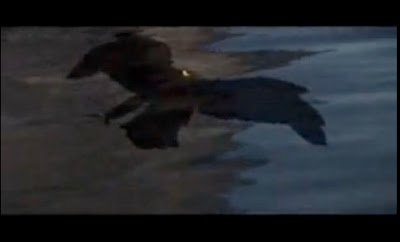Hey Kids- Before I get started, I want to let you all know that this will be my last post at this bolg spot. I'm going to start a new one that encompasses a more over all idea of art and culture, not just graphic design. It will also focus on more of my projects too. So, I'm thinking of a new name and will most likely have it up soon.
Okay, today I want say a Big Happy Birthday to an amazing artist, and graphic designer by the name of Barney Bubbles (born Colin Fulcher, July 30th, 1942. Bubbles work encompassed graphic design, and music video direction. He also painted and sketched, but he's best known for his unique design contributions for the British independent music scene of the 1970s and 1980s. It's said that his name Barney Bubbles, came about when Fulcher was operating a light show that created a bubble effect by mixing oils and water on projection slides.
In 1977 Bubbles joined Stiff Records as a designer ("If It Ain't Stiff, It Ain't Worth a Fuck") His designs helped assure Stiff's reputation as a provocative independent label. Bubbles created sleeves for bands including The Damned, Elvis Costello, Ian Dury and Wreckless Eric. He created offbeat logos such as the face logo for the Blockheads, and advertisements and promotional items, such as the marketing of Elvis Costello's My Aim Is True.
In 1977 Bubbles joined a new label Radar Records and then later, F-Beat Records. At these labels Bubbles created designs for artists such as Elvis Costello, Nick Lowe, Carlene Carter and Clive Langer & The Boxes.
Bubbles also had an awesome freelance career. Actually, it was one that anyone would envy, (me, hint, hint.) He created designs for musicians and bands such as Peter Jenner (Ian Dury and Billy Bragg's manager), and others, including Vivian Stanshall, Generation X, Big Star, Johnny Moped, Whirlwind, Billy Bragg, Clover, The Sinceros, Roger Chapman, Phillip Goodhand-Tait, Dr. Feelgood, Inner City Unit and The Psychedelic Furs. Whoa! I know, Right?!
Bubbles was on the vanguard of music video and directed several, including The Specials' "Ghost Town", Squeeze's "Is That Love" and "Tempted", Elvis Costello's "Clubland" and "New Lace Sleeves."
Sadly, Bubbles tragically took his own life on November 14th,1983. It was said that he suffered from bipolar disorder,[A] experiencing increasing frequent bouts of depression [B], and had considerable personal and financial worries [C]. He was only 41 years old. It makes me wonder why it's so often that great creative talent seems to struggle with these issues. At least in the end he was at peace, even if we lost a great visionary.
Well, we can most certainly celebrate his life, his art, and designs! Here are some awesome examples of his work!
 Logotype designed by Bubbles in 1977 for Ian Dury's Blockheads. You can
see Bubbles wit come through on this design, as the type creates a face, reinforcing the idea of the "Blockhead"
Logotype designed by Bubbles in 1977 for Ian Dury's Blockheads. You can
see Bubbles wit come through on this design, as the type creates a face, reinforcing the idea of the "Blockhead" 
The Ian Dury Song Book cover, 1979
You can also celebrate Barney Bubbles by checking out: http://www.barneybubbles.com
References:
A. Carol Clerk. Saga of Hawkwind, Omnibus Press, 2004, ISBN 1-84449-101-3.
B. an Abrahams. Hawkwind: Sonic Assassins, SAF Publishing Ltd, 2004, ISBN 0-946719-69-1
C. Hodkinson, Mark (2 January 2012). "In Search of Barney Bubbles".
BBC Radio 4. http://www.bbc.co.uk/programmes/b018wh7h
Other References include:
Graphic Design, A Concise History by Richard Hollis, Thames and Hudson, 1994 ISBN 0-500-20270-2
Thames and Hudson Dictionary of Graphic Design and Designers, Thames and Hudson, 1992 ISBN 0-500-20259-1
Wikipedia, the free encyclopedia
http://en.wikipedia.org/wiki/Barney_Bubbles


















































